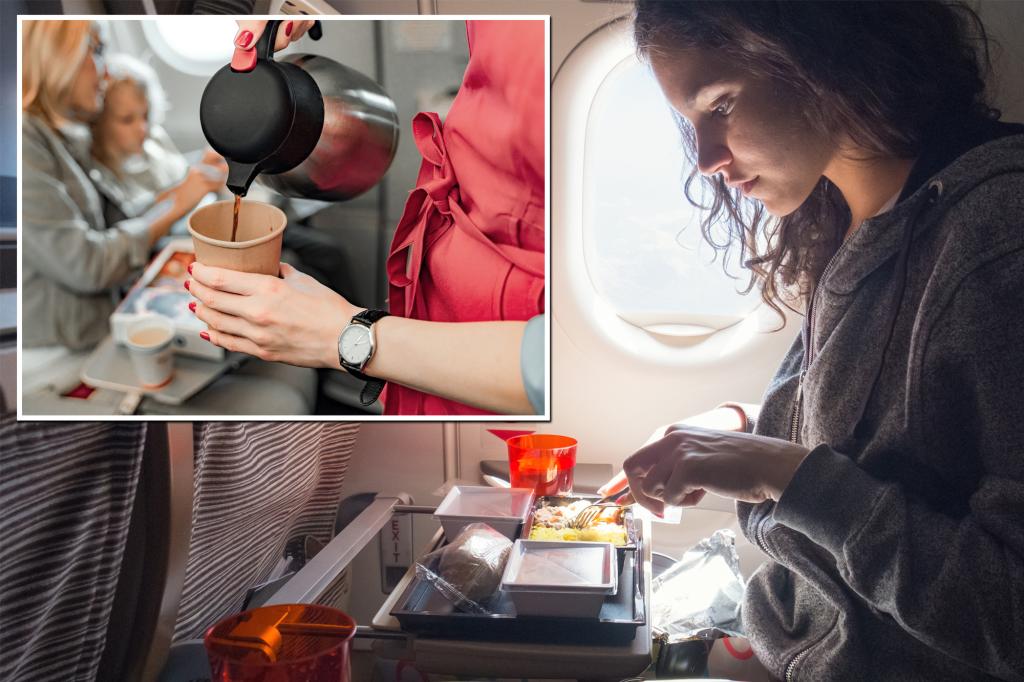The unappetizing reputation of airplane food isn’t entirely undeserved, but the reasons behind its lackluster flavor are more complex than simple culinary shortcomings. Scientific factors, specifically the altered cabin environment at high altitudes, play a significant role in how our taste buds perceive food and beverages during flight. The lower humidity and pressurized conditions prevalent in airplane cabins lead to dehydration, which dulls our sense of taste, particularly for salty and sweet flavors. This physiological phenomenon explains why airline meals often seem bland and why passengers might find themselves craving typically less appealing beverages like tomato juice or ginger ale, as their inherent sweetness and umami become more pronounced at altitude. Conversely, sour, bitter, and spicy flavors remain relatively unaffected, prompting airline caterers to often incorporate more spices into their dishes to compensate for the diminished taste perception.
Beyond the impact of cabin pressure and humidity, the ambient noise and vibrations within the aircraft also contribute to the altered dining experience. Studies have shown that these factors can influence our sense of smell, a crucial component of how we perceive flavor. The constant drone of the engines and the subtle vibrations can interfere with the olfactory system, further diminishing the overall enjoyment of in-flight meals. This sensory disruption can explain why even familiar foods may taste unfamiliar and less appealing during air travel. The combination of these factors creates a unique sensory environment that significantly impacts how we experience food and beverages while airborne.
The managing editor of The Points Guy, a prominent travel website, confirms this phenomenon, noting that his own sense of smell is noticeably affected during flights, which, in turn, alters his perception of taste. He recommends opting for beverages like Coke Zero or a cranberry juice and club soda mixture to counter the dehydrating effects of the cabin environment. He also advises caution against excessive alcohol consumption, as it exacerbates dehydration and increases the likelihood of a post-flight hangover. Interestingly, he points out that American Airlines offers espresso on select routes, a welcome alternative to the typically subpar airplane coffee. His food recommendations include pasta, a generally reliable option in the air, and, when available on American Airlines, the burger or short rib, which he considers superior choices.
The science of taste explains why certain foods and beverages fare better than others in the pressurized cabin environment. Tomato juice, rich in umami and sweetness, experiences an enhanced flavor profile at altitude, making it a popular in-flight beverage. Similarly, the sweetness of ginger ale becomes more pronounced, possibly increasing its appeal to passengers. These preferences align with the scientific understanding of taste perception under the specific conditions of air travel. While airlines have made strides in improving the culinary quality of their offerings, the inherent challenges posed by the cabin environment remain.
Therefore, the next time you find yourself unimpressed by an airplane meal, remember that it’s not solely the chef’s fault. The combination of low humidity, cabin pressure, and ambient noise creates a unique sensory landscape that significantly alters our perception of taste and smell. These factors contribute to the blandness often associated with airline food and explain why certain beverages, like tomato juice and ginger ale, become unexpectedly appealing. While airlines continue to experiment with flavors and preparation methods to optimize their in-flight menus, the science of taste remains a formidable challenge.
In conclusion, the perception of flavor during air travel is a complex interplay of environmental factors and physiological responses. The dehydrating effects of the cabin, combined with the influence of noise and vibrations on our sense of smell, create a less-than-ideal setting for culinary enjoyment. Understanding these scientific principles helps explain why airplane food often receives criticism and provides insight into why certain food and beverage choices might be more palatable than others at 30,000 feet. While airlines continue to seek ways to improve the in-flight dining experience, the inherent challenges posed by the airborne environment persist, making the quest for delicious airplane food an ongoing endeavor.

